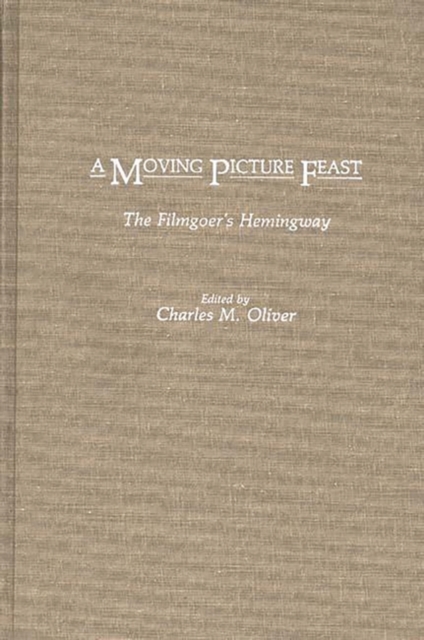
A Moving Picture Feast : The Filmgoer's Hemingway Hardback
by Charles Oliver
Hardback
Description
The essays in A Moving Picture Feast discuss every Hollywood film made from a Hemingway work and represent the most diverse response yet to the Hemingway-Hollywood relationship.
The contributors examine the popular public image Hollywood created of Hemingway the man and offer a provocative look at the esthetic relationship between fiction and cinema.
They criticize the films themselves as art, in many cases with scene-by-scene analysis, and explore the process by which films are adapted from novels and short stories.
Their research includes inside decisions made by producers and directors that affected the final versions of specific films.
With its valuable bibliography, listing nearly 400 articles, reviews, and screenplay typescripts, A Moving Picture Feast will be an important resource for film buffs as well as any student or scholar of Hemingway.
Oliver's collection of 15 articles about film versions of Ernest Heminway's works conducts an interesting and worthwhile conversation about the possible relationships between art in one media and the work it inspires in another.
ChoiceThis collection of 15 chapters by Hemingway film scholars discusses every Hollywood film made from a Hemingway work and represents the most diverse response yet to the Hemingway-Hollywood relationship.
The contributors go beyond discussing the failure of the film medium to be worthy of Hemingway to criticize the films themselves as art and in one case with scene-by-scene analysis.
They explore the process by which films are adapted from novels and short stories.
Their research includes inside decisions made by producers and directors that affected the final versions of specific films.
Their analysis is of diverse subjects--from the dichotomy of Hemingway as private person and celebrity, to the prevailing film morality of revising original stories to fit Hollywood standards.
This important addition to the small body of literature on Hemingway films will shed light on a neglected area of Hemingway studies.
With its valuable bibliography listing nearly 400 titles--articles, reviews, and screenplay typescripts--A Moving Picture Feast will be an important resource for film buffs as well as for any student or scholar of Hemingway. The book is divided into three sections. The chapters in the first section explore the similarities and vast differences between Hemingway's style and general cinematic techniques.
The contributors examine the popular public image Hollywood created of Hemingway and offer a provocative look at the esthetic relationship between fiction and cinema.
The chapters in the second section examine the films made from Hemingway novels.
One chapter compares three different versions of To Have and Have Not; another discusses Hemingway's extensive collaboration on the documentary film The Spanish Earth.
The third section examines the films made from the short stories.
This section includes a compelling discussion of film noir and how this technique applies to the film versions of The Killers.
Another chapter offers a fascinating comparison of the esthetics of the short stories of In Our Time and the classic D.
W. Griffith film The Birth of a Nation.
Information
-
Out of stock
- Format:Hardback
- Pages:202 pages
- Publisher:Bloomsbury Publishing Plc
- Publication Date:01/06/1989
- Category:
- ISBN:9780275931469
Information
-
Out of stock
- Format:Hardback
- Pages:202 pages
- Publisher:Bloomsbury Publishing Plc
- Publication Date:01/06/1989
- Category:
- ISBN:9780275931469






